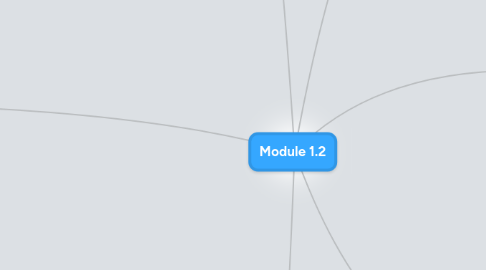
1. Stratigraphy and Geological structures
1.1. Stratigraphy is the study of rock origin, composition, distribution and succession of strata
1.1.1. Studies Rick types, well logs from offset wells, and fossil information to find age relationships between rock layers in different locations
1.1.1.1. Matching of these layers is called stratigraphic correlation
1.2. Stratigraphic traps result from a change in Rick characteristics that prevent the continued upwards flow of hydrocarbons
1.2.1. Unconformities, Pinchouts, reefs, sandbars, deltas and river channels
1.2.1.1. An unconformity exists when the lower beds have been uplifted a f eroded before the upper beds were deposited
1.2.1.2. A pinchout occurs at the edge of a rock layer
1.3. When rocks are deformed into a shape, the shape is referred as a structure
1.3.1. Folds, faults and domes
1.3.1.1. Anticline, where the rocks arches upwards
1.3.1.2. Syncline, where the rock forms a trough
2. Sedimentary rocks
2.1. Sedimentary rocks are classified into one of three categories depending on how they are formed
2.1.1. Clastic rocks are formed from fragments of pre-existing rocks which have been weathered, eroded, transported, deposited and then lithified
2.1.1.1. Most important rocks to western Canada petroleum exploration
2.1.1.1.1. Most commercial deposits o oil and gas found to date have been found in them
2.1.1.2. 5 natural processes that form new clastic rocks
2.1.1.2.1. Weathering, erosion, transportation, deposition an lithification
2.1.2. Chemical rocks form when water containing minerals or salts in solution pass through rock and chemical reactions occur between the minerals in the rock, and those in the water
2.1.2.1. Also form when the water completely evaporates and leaves behind a large deposit of salt
2.1.3. Organic rocks are formed from the skeletal remains of aquatic life
2.1.4. Key properties of sedimentary rocks include chemical composition, grain size, porosity, permeability, heterogeneity, fractures and fluid saturation
2.1.5. Hydrocarbons form in source rocks
2.1.5.1. Source rocks are strata that have accumulated large amounts of organic debris under conditions where it had not been oxidized
2.1.6. A seal at the top of the reservoir prevents petroleum from escaping out of the trap
2.1.7. The higher the porosity, the more fluid contained in a given volume of rock
2.1.8. The higher the permeability, the easier fluid can move from one pore to another pore and hence through the rock
2.1.9. Continental environments include lakes, rivers and deserts
2.1.10. Marine environment include the continental shelf, the continental slope and the ocean floor
2.1.11. Transitional environment are the region between the continental environment and he marine environment
2.1.11.1. Include marine deltas, beaches, sandbars and lagoons
3. Principles
3.1. First principle of geology
3.1.1. The present is the key to the past
3.2. Law of faunal succession
3.2.1. Helps to correlate rocks in separate locations
3.2.2. Also used to help age rock layers
3.3. Law of horizontality
3.3.1. Asserts that sedimentary rocks are laid down essentially flat
3.4. Law of superposition
3.4.1. States in an undisturbed sequence of sedimentary rocks
3.4.1.1. Each layer is younger than the one below and older than the one above
4. Minerals an rocks and the rock cycle
4.1. Minerals are naturally occurring inorganic, crystalline elements or compounds
4.2. Igneous rock forms when material from the mantle is deposited onto it into the crust
4.2.1. Granite, mica, and quartz
4.3. Water is involved in the formation of sedimentary rock
4.3.1. Sandstone, limestone, dolomite, shale, salt and potash
4.4. Metaphoric rock forms due to the extreme temperature and pressure found near the base of the crust
4.4.1. Gneiss and schist
4.5. Rock cycle shows that each type of rock can be transformed into each other type of rock
5. Plate tectonics
5.1. Movement of continents, or plate tectonic, drives the rock cycle
5.1.1. Various plates float on top of the fluid
5.1.1.1. Very viscous layer capable of slow movement, and are moved around due to convection currents in the mantle
5.2. The last supercontinent was Pangaea.
5.2.1. Began to break apart about 180 million years ago
5.3. When plates collide, mountains may form where one plate sinks below another, earthquakes may occur or volcanoes may erupt
5.4. Rift is a fault-bounded valley where the crust is pulling apart
5.5. Responsible for extreme conditions of uplift and burial
6. Geological time
6.1. Believed the planets were formed about 4.6 billion years ago
6.1.1. Based on retroactive dating (retroactive dating allows geologists to determine when a rock was formed
6.2. Early geologists used significant changes in the fossil record to develop the geological time scale
6.3. 4 periods in which oil and gas are most likely to be found in western Canada
6.3.1. Cretaceous
6.3.2. Triassic
6.3.3. Mississippian
6.3.4. Devonian
6.4. Earth is composed of a core, mantle
6.4.1. Only layer of the earth that has been directly examined by scientists is the upper crust
6.4.1.1. Makes up less than 1% of the earth
